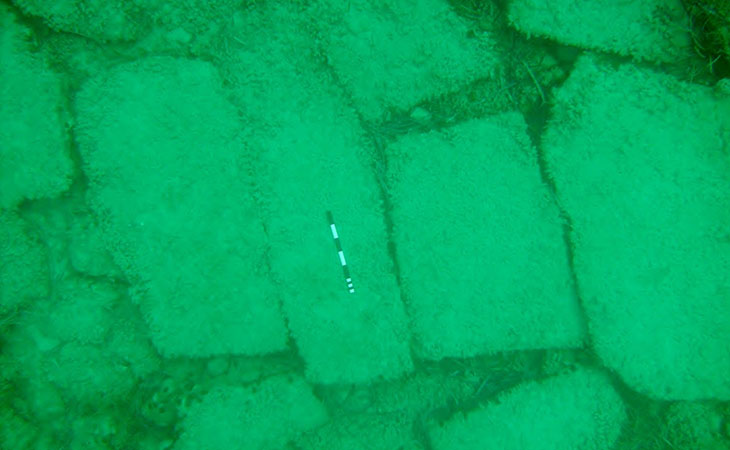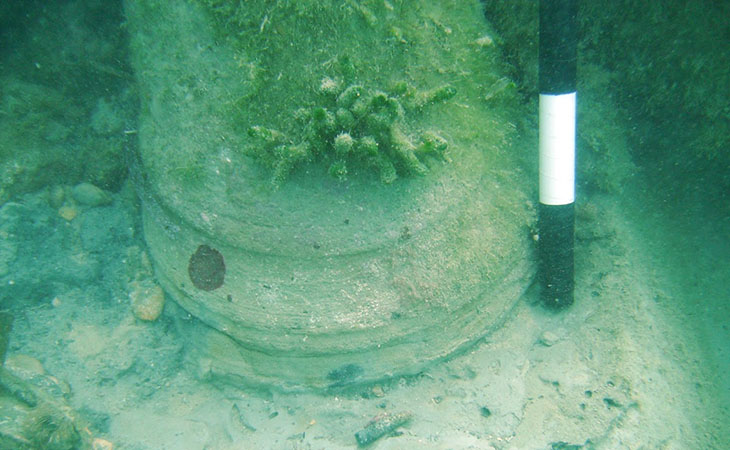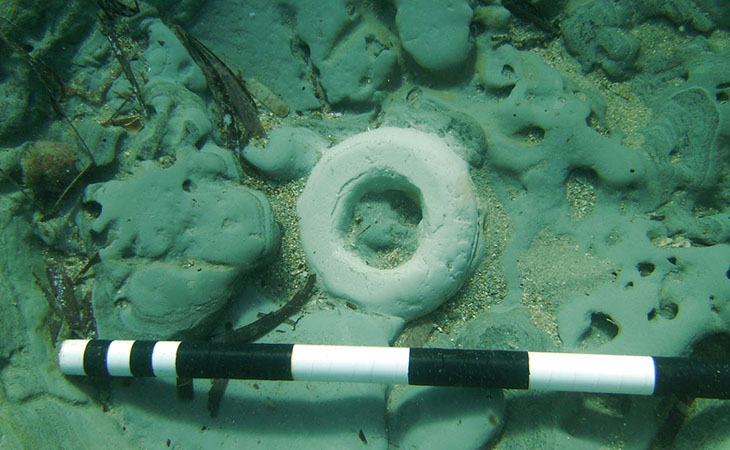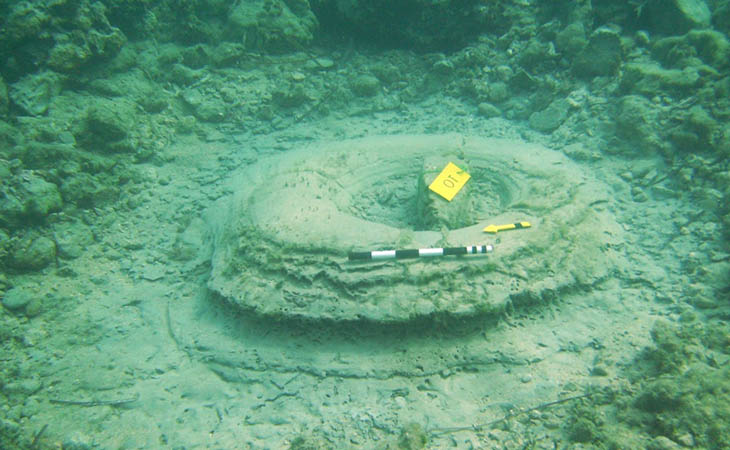When snorkelers discovered what appeared to be ancient stonework off the coast of the Greek island of Zakynthos in 2013, archaeologists sent to the site thought the odd rocks might be the ruins of an ancient city. But among the columns, bagel-shaped rings and paving stone‒like rocks, they found no telltale pottery shards or other artifacts. Soon after, geochemist Julian Andrews of England’s University of East Anglia and colleagues dove down to the supposed ruins and collected samples.
Turns out, the so-called Lost City of Zakynthos was built by microbes, not by ancient Greeks. What appear to be submerged Greek ruins are actually the fossilized remains of sediments laid down by methane-chomping microbes millions of years ago, the researchers report in the September Marine and Petroleum Geology.
The formations are the creation of microbes living in vents below the seafloor where methane-rich fluids seeped toward the surface around 3 million to 4 million years ago, the researchers’ analysis suggests. As those microbes feasted on the methane, their excretions produced carbonate minerals that formed large hollow structures. Over time, erosion exposed those structures on the seafloor. While not an archaeological treasure trove, the finding could help scientists learn more about the region’s geologic past.
The researchers even penned a helpful maxim to mark their discovery: “Columns and pavements in the sea, not always antiquities will be.”

SUBMERGED STONEWORK Methane-eating bacteria helped form these paving stone‒like formations in the Mediterranean.UNIVERSITY OF ATHENS

PILLAR PERFECT The odd structures, which come in a range of shapes, were originally misidentified as Greek ruins.UNIVERSITY OF ATHENS

SUBMERGED CIRCLES While formed below the seafloor, the objects were later exposed by erosion.UNIVERSITY OF ATHENS

SEA CEMENT Studying the structures could help researchers better understand the local geologic history.UNIVERSITY OF ATHENS





